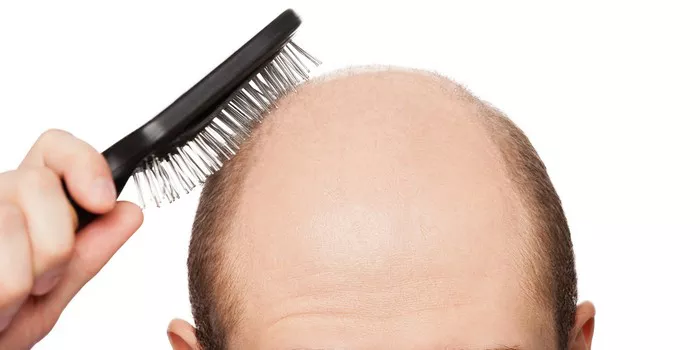Hair transplant surgery has become an increasingly popular solution for individuals experiencing hair loss. While the procedure offers promising results in restoring hair, there are often questions and concerns regarding its long-term effectiveness. Among these concerns is the possibility of going bald again after undergoing a hair transplant. Understanding the factors influencing hair transplant outcomes and the potential for future hair loss is crucial for individuals considering this procedure.
Understanding Hair Transplantation
Before delving into the possibility of going bald after a hair transplant, it’s essential to grasp the fundamentals of the procedure itself. Hair transplantation involves the surgical relocation of hair follicles from a donor site to areas of thinning or balding on the scalp. The two primary techniques used in hair transplantation are follicular unit transplantation (FUT) and follicular unit extraction (FUE).
In FUT, a strip of hair-bearing skin is removed from the donor area, typically the back or sides of the scalp, and dissected into individual follicular units for transplantation. FUE, on the other hand, involves extracting individual follicular units directly from the donor site using a small punch tool. Both techniques aim to redistribute healthy hair follicles to areas where hair loss has occurred, providing a more natural-looking and fuller head of hair.
Factors Influencing Hair Transplant Success
Several factors influence the success of a hair transplant and the long-term viability of the transplanted hair. These include:
1. Patient’s Age and Hair Loss Stage: The stage of hair loss and the patient’s age at the time of the transplant can significantly impact the outcome. Transplants performed at earlier stages of hair loss when the donor hair is more abundant tend to yield better results.
2. Quality of Donor Hair: The density, texture, and overall quality of the donor hair play a crucial role in determining the success of the transplant. Healthy hair follicles from the donor area are essential for achieving satisfactory outcomes.
3. Surgical Technique: The skill and expertise of the surgeon performing the transplant greatly influence the success of the procedure. Experienced surgeons can minimize damage to the follicles during extraction and ensure proper placement for optimal growth.
4. Postoperative Care: Following the surgeon’s instructions for postoperative care is vital for ensuring the survival of the transplanted hair follicles. Proper care helps minimize the risk of complications and promotes healthy hair growth.
5. Underlying Medical Conditions: Certain medical conditions, such as autoimmune disorders or hormonal imbalances, can affect the body’s ability to support hair growth. Addressing these underlying issues before undergoing a transplant is crucial for optimal results.
6. Lifestyle Factors: Lifestyle factors such as smoking, excessive alcohol consumption, and poor nutrition can negatively impact hair health and the success of the transplant. Adopting a healthy lifestyle can contribute to better outcomes.
Potential for Future Hair Loss
While hair transplant surgery can provide significant improvements in hair density and coverage, it’s essential to recognize that it does not halt the progression of genetic hair loss. In individuals with male or female pattern baldness, which is primarily driven by genetics and hormonal factors, the transplanted hair may be susceptible to the same hair loss patterns as the original hair.
In other words, while the transplanted hair is typically more resistant to balding compared to the recipient area’s original hair, it is not entirely immune to future hair loss. As a result, some individuals may experience gradual thinning or balding in areas surrounding the transplanted hair over time.
Managing Expectations and Planning for the Future
Managing expectations is crucial for individuals considering a hair transplant procedure. While the surgery can significantly improve the appearance of thinning or balding areas, it’s essential to understand its limitations and the potential for future hair loss.
Consulting with a qualified and experienced hair transplant surgeon is the first step in determining whether the procedure is suitable and realistic expectations. During the consultation, the surgeon will evaluate the individual’s hair loss pattern, donor hair availability, and overall candidacy for the surgery.
Additionally, discussing long-term hair loss management strategies with the surgeon is essential for individuals concerned about potential future hair loss. This may include ongoing treatments such as medications (e.g., finasteride, minoxidil) or maintenance sessions to address progressive hair loss and preserve the results of the transplant.
Conclusion
Hair transplant surgery can be an effective solution for individuals seeking to restore hair density and coverage in areas affected by hair loss. While the procedure offers promising results, it’s essential to understand that it does not guarantee permanent immunity from future hair loss. Factors such as the patient’s age, hair loss stage, surgical technique, and postoperative care all influence the success of the transplant.
Managing expectations and planning for potential future hair loss are essential aspects of the decision-making process for individuals considering a hair transplant. Consulting with a qualified surgeon, understanding the limitations of the procedure, and discussing long-term hair loss management strategies are crucial steps in achieving satisfactory outcomes and maintaining a healthy head of hair.


